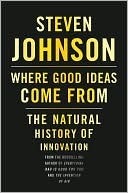More on this book
Community
Kindle Notes & Highlights
When they finally crunched the numbers, West and his team were delighted to discover that Kleiber’s negative quarter-power scaling governed the energy and transportation growth of city living. The number of gasoline stations, gasoline sales, road surface area, the length of electrical cables: all these factors follow the exact same power law that governs the speed with which energy is expended in biological organisms.
Something about the environment of a big city was making its residents significantly more innovative than residents of smaller towns.
Even after the FCC mandated that all television stations cease broadcasting the old analog standard on June 12, 2009, more than 10 percent of U.S. households had televisions that went dark that day.
Call it the 10/10 rule: a decade to build the new platform, and a decade for it to find a mass audience.
The long-zoom approach lets us see that openness and connectivity may, in the end, be more valuable to innovation than purely competitive mechanisms.
What the adjacent possible tells us is that at any moment the world is capable of extraordinary change, but only certain changes can happen.
The strange and beautiful truth about the adjacent possible is that its boundaries grow as you explore those boundaries. Each new combination ushers new combinations into the adjacent possible.
Good ideas are not conjured out of thin air; they are built out of a collection of existing parts, the composition of which expands (and, occasionally, contracts) over time.
The trick to having good ideas is not to sit around in glorious isolation and try to think big thoughts. The trick is to get more parts on the table.
A new idea is a network of cells exploring the adjacent possible of connections that they can make in your mind.
dense network incapable of forming new patterns is, by definition, incapable of change, incapable of probing at the edges of the adjacent possible.
The connections are the key to wisdom, which is why the whole notion of losing neurons after we hit adult-hood is a red herring. What matters in your mind is not just the number of neurons, but the myriad connections that have formed between them.
good ideas have certain signature patterns in the networks that make them.
The answer, as it happens, is delightfully fractal: to make your mind more innovative, you have to place it inside environments that share that same network signature:
They simply widened the pool of minds that could come up with and share good ideas. This is not the wisdom of the crowd, but the wisdom of someone in the crowd. It’s not that the network itself is smart; it’s that the individuals get smarter because they’re connected to the network.
when different intellectual disciplines collide.
In the early 1990s, a psychologist at McGill University named Kevin Dunbar decided to take another approach: instead of reading biographies or theorizing in the lab or listening to scientists recount their greatest hits, he would actually watch them as they worked.
one of the major failings of traditional studies that rely on retrospective interviews: people tend to condense the origin stories of their best ideas into tidy narratives, forgetting the messy, convoluted routes to inspiration that they actually followed.
The most striking discovery in Dunbar’s study turned out to be the physical location where most of the important breakthroughs occurred.
Detecting such subtle patterns in real time was the unrealized goal of the much-criticized Total Information Awareness project spearheaded by Admiral John Poindexter
Her research suggests a paradoxical truth about innovation: good ideas are more likely to emerge in environments that contain a certain amount of noise and error.
A good idea has to be correct on some basic level, and we value good ideas because they tend to have a high signal-to-noise ratio. But that doesn’t mean you want to cultivate those ideas in noise-free environments, because noise-free environments end up being too sterile and predictable in their output.
Without noise, evolution would stagnate, an endless series of perfect copies, incapable of change.
Most of the time, these errors lead to disastrous outcomes, or have no effect whatsoever. But every now and then, a mutation opens up a new wing of the adjacent possible. From an evolutionary perspective, it’s not enough to say “to err is human.” Error is what made humans possible in the first place.
Recent studies suggest that the mutation rate in human germ cells is roughly one in thirty million base pairs, which means each time parents pass their DNA on to a child, that genetic inheritance comes with roughly 150 mutations.
An important part of Gutenberg’s genius, then, lay not in conceiving an entirely new technology from scratch, but instead from borrowing a mature technology from an entirely different field, and putting it to work to solve an unrelated problem.
big cities nurture subcultures much more effectively than suburbs or small towns.
innovation thrives in discarded spaces.


